This image shows the successful photodynamic treatment of stomach cancer using the photosensitizer, Bremachlorin®. The study was presented by Dr. Vladimir Romanov in May 2013 at the 14th World Congress of the International Photodynamic Association in Seoul, South Korea. At the Seoul conference, Dr. Romanov reported on a series of stomach cancer cases that demonstrated the efficacy of Bremachlorin-PDT. Stomach cancer is currently the second most common cause of cancer death worldwide, making it one of the most lethal of all cancers. Some 830,000 new cases are diagnosed each year. During the treatment, Bremachlorin® is infused into the blood and then selectively accumulates in the stomach tumor over three to seven hours. Upon treating the entire stomach with laser light, Bremachlorin® undergoes reactions that release highly reactive oxygen molecules; these molecules cause the tumor’s complete destruction. At the same time, the immune system is activated in such a way as to eliminate metastases that exist elsewhere in the body. Dr. Romanov’s research team has carefully studied a total of 80 patients with stomach cancer. Most of these cases were at high risk of developing complications from surgery. Some of the patients had rejected surgery, while others had no other option due to the far-advanced nature of their malignant disease.
Findings from Dr. Romanov’s Clinical Study
Over a five-year period, multiple PDT treatments were performed on each patient. During this period, a biopsy was done twice in the first year, then once a year for the next four years. The most effective PDT treatment schedule was found to be three sessions in the first year and two sessions in each of the subsequent years. Every patient responded in some way to the treatment, with about half the group (49%) showing a partial treatment response. One in every three patients (35%) showed a complete treatment response, while most of the remaining patients (15%) showed stabilization of their disease—suggesting a very favorable treatment outcome overall. Out of the entire group, 30 percent had recurrences of their tumors and were treated repeatedly, without any serious side effects. Among those patients with the most advanced cancers, a few had managed to survive at least eight years by the time these results were reported at the 14th World Congress of the International Photodynamic Association. As suggested by this pioneering study, Bremachlorin-PDT offers an elegant approach that can enable many patients to save their stomachs and their lives as well. It may be just a matter of time before PDT replaces the traditional method of cutting out the stomach entirely—a strategy that comes with a high risk of deadly relapse and seriously compromises one’s quality of life. Bremachlorin became a medicine in Russia in 2009. One of our goals is to introduce this and other promising photosensitizers as medicines to the western world. Support us by buying our book The Medicine of Light as well as ebooks from our Photoimmune Discoveries eBook Series.
Treating Stomach Cancer with Photodynamic Therapy, Case 1.
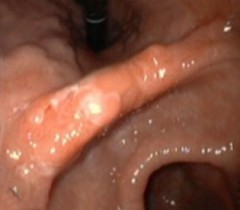 |
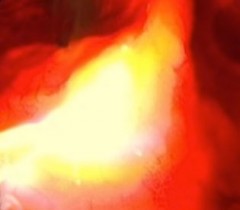 |
| 1. Before Bremachlorin-PDT. Stomach cancer is invisible to the naked eye—here it only appears as a raised deformity or thickened fold of the stomach lining. Treatment begins with an infusion of Bremachlorin®, the photosensitizing agent that preferentially accumulates in the tumor. | 2. Light Treatment. Light exposure to the stomach results in a potent reaction between light, oxygen and Bremachlorin®. The light’s energy generates oxygen radicals and begins to trigger the tumor’s destruction. |
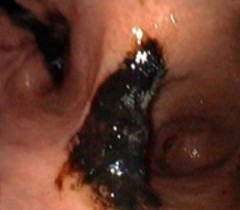 |
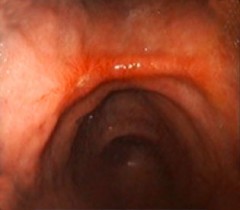 |
| 3. After Bremachlorin-PDT. Within 24 hours, tumor destruction is clearly present as darkened tissue; this indicates a form of cell death known as necrosis—essential to triggering an anti-cancer immune response that eradicates deadly metastases. | 4. Complete Remission, 6 weeks after Bremachlorin-PDT. The tumor and abnormal tissue have completely disappeared, and the stomach is healthy again. |
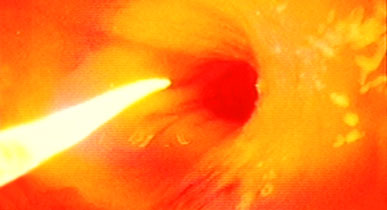
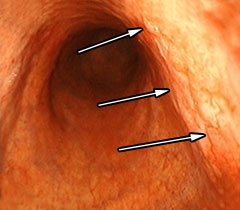


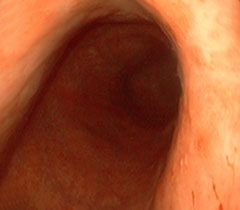

 English
English Français
Français Deutsch
Deutsch Nederlands
Nederlands